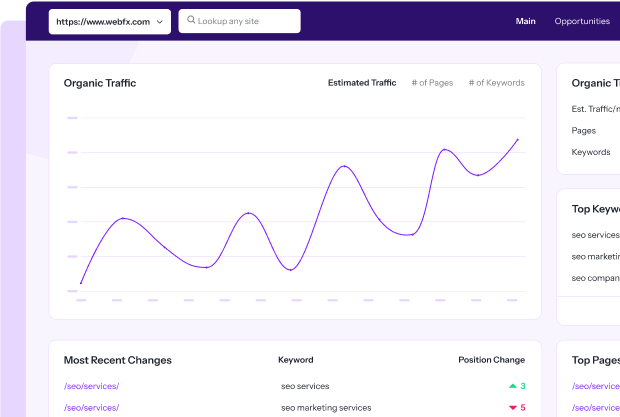A deep refresh is great for the mind and soul, whether it’s your car, home, yard, or workspace. Your business’s website is no different — keeping it cleaned up and organized does wonders for its search engine performance and user experience. Enter content pruning.
Keep reading to learn more about this practice, and to start crafting your custom content strategy today!
What is content pruning?
Content pruning is the process of ridding your website of duplicate, outdated, thin, inaccurate, and nonperforming content. It’s much like pruning a tree — by removing the elements holding back healthy growth, the remaining ones have the environment they need to thrive.
What are the benefits of content pruning?
The most important reason to prune your content is to support your search engine optimization (SEO) efforts. While it may look contradictory at first glance, removing stagnant, underperforming content improves your SEO.
So, how does content pruning help SEO? Consider the following:
- It maximizes your crawl budget — the number of pages a search engine crawls on your site each day.
- It ensures your website contains unique, accurate, high-quality information, improving authority and trustworthiness.
- It creates a better user experience, providing more valuable information and encouraging others to engage with your content more.
- It promotes internal links and backlinks to high-authority pages with performance potential.
How often do I have to prune my content?
There is no one correct answer to this question. Generally, it depends on how often you add new content and how many pages your website contains. Those with more pages and frequent additions should prune their content more regularly. If your business has fewer pages and posts less often, you won’t need to repeat the cycle as frequently.
However, it’s clear that — like SEO — pruning must be an ongoing and consistent process to reap the maximum value.
The style you use for your content is another determining factor. For example, if you use a lot of dates in your posts, such as “The 10 Best Widgets of 2024,” you’ll need to update that information at the beginning of each year at a minimum.
How do I prune my website content?

Follow these steps for the best results when content pruning.
-
Audit your content carefully
Remember that you don’t need to remove all your older content. If you’ve implemented a sound content strategy, your website likely contains evergreen content that continues driving traffic. This fact proves the copy is still relevant and helpful to users. Similarly, you may have pages with a lot of backlinks from reputable sources. They send positive ranking signals to the search engines, which is great for SEO.
These two pieces might benefit from a content refresh that improves their ranking and traffic-capturing potential, but their current value justifies keeping them around.
Carefully assess the other pages on your site and remove any that are outdated and irrelevant. For example, if your website still houses a page about a defunct law or discontinued product or service, it’s time for those to go. The remainder moves on to step two.
-
Evaluate the content performance
It’s time to dig into your analytics to get an accurate picture of what may be underperforming.
First, verify that the search engine has crawled and indexed your page. It can’t route traffic to a page without knowing it exists and what it contains. You can quickly index any pages that appear undiscovered.
Once you confirm indexing, pull reports on each URL using metrics like backlinks and clicks. Note the results for each page, and continue to step three.
Cut Your SEO Time in Half

-
Evaluate the possibility of a second chance
Updating pages, consolidating posts, or repurposing content can save your team the time and effort of a complete rewrite, but that’s not always the case. Sometimes, you’re better off removing the existing page and starting anew.
Some quick questions you can ask yourself to guide you include:
- Are there similar topics you can combine? Perhaps you have two blog posts covering separate aspects of a shared overall topic. See if you can blend these into a comprehensive long-form article that provides additional depth and offers more value, enhancing the user experience.
- Are there pages with duplicate content or keyword cannibalization? Pages featuring identical or similar copies hurt SEO since search engines may rate it as thin or invaluable. Similarly, rankings drop among pages targeting identical keywords, a concept called keyword cannibalization.
- Are there opportunities to make or split list-style posts? A list post often provides a bird’s-eye view of a topic. This content is perfect for dividing into smaller posts where you can expand on the information. Similarly, a lot of smaller and more in-depth copies may make an excellent listicle.
- Are there opportunities to freshen or add to content? If you have content with statistics, updating the data with fresh information may breathe new life into these posts and help them rank again. Thin content can also benefit from some additional “meat” to improve its performance.
Generally speaking, if the content you’ve identified as dead weight doesn’t appear to have potential and hasn’t driven traffic in two years or more, it’s time to remove it.
-
Work with a content marketing and SEO professional on pruning
A content marketing and SEO expert can help your company with a comprehensive content audit and SEO analysis to assess what’s performing well, what needs attention, and what you should entirely remove. They’ll also help devise a custom strategy for your business that leverages unique, high-performing content as part of your broader SEO approach.
Boost your website SEO and content performance with SEO.com
SEO.com features a track record of excellence and a team of seasoned experts to help you scale up your content for SEO. Learn more about how our team of specialists can help you by contacting us today!
Table of Contents
- What is Content Pruning?
- What Are the Benefits of Content Pruning?
- How Often Do I Have to Prune My Content?
- How Do I Prune My Website Content?
- Audit Your Content Carefully
- Evaluate the Content Performance
- Evaluate the Possibility of a Second Chance
- Work with a Content Marketing and SEO Professional on Pruning
- Boost Your Website SEO and Content Performance with SEO.com
Find Keyword Opportunities Faster
Keyword research doesn’t have to be complicated. Make it easier with SEO.com!
Writers


